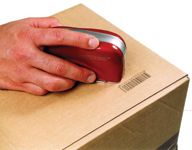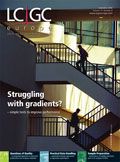New Technologies
Now there's light in the "black hole" - of a brief case. German-based international leather and bag specialist BREE has created the first illuminated business handbag with Smart Surface Technology. Bree put their trust in innovative solutions. They say, "We had been toying with the idea of illuminating the dark insides of handbags for quite some time, but lacked an elegant solution which not only met our traditionally high demands with regard to style and function, but was also technically feasible."
An illuminated idea
Now there's light in the "black hole" — of a brief case. German-based international leather and bag specialist BREE has created the first illuminated business handbag with Smart Surface Technology. Bree put their trust in innovative solutions. They say, "We had been toying with the idea of illuminating the dark insides of handbags for quite some time, but lacked an elegant solution which not only met our traditionally high demands with regard to style and function, but was also technically feasible."

They believe they have found the solution in "Smart Surface Technology" developed by Bayer Material Science, one of the world's largest plastics manufacturers, in partnership with the Swiss firm, Lumitec, a specialist in electroluminescence (EL) and precision electronic components.
Scientists use the term EL to refer to a method of generating light that fireflies have been masters of all along — albeit by chemical means. In contrast to fireflies, engineers use a film that lights up on application of a voltage to achieve EL light generation. Electroluminescence is literally a "cool" concept because it does not produce heat. The hitch was that only flat surfaces of limited size could be achieved in the past. However, Smart Surface Technology now makes it possible for the films to be shaped as needed and thus to illuminate any conceivable geometry.

Eckard Foltin, head of the Creative Center at Bayer Material Science, says the main field of application for this quantum leap in technology is in the automotive industry: "Incandescent lamps in cars will soon be a thing of the past. Instrument panels will be designed to take up less room. The headliner on the interior of a car will glow in a soft, glare-free light and provide a pleasant atmosphere in the passenger compartment."
Speaking of magic, BREE even sees a realistic chance of getting these innovative bags into stores by the coming year — and thus staying one step ahead of the competition as well. Because Axel and Philipp Bree are convinced of one thing: "In less than five years, interior light will be just as common in handbags as mobile telephones are today."
Mini portable printer
PrintDreams (Kista, Sweden) has come up with a printer that has the length of a normal ballpoint pen and the width and height of a modern mobile phone. The total volume is less than 300 c.c. and weighs around 350 g. This first version of PrintBrush was designed to roughly fit into a shirt pocket, however, there still remains a clear potential for size and weight reduction in coming versions that will allow an even more comfortable fit. Internet content, SMS, pictures and other information is downloaded to the PrintBrush from PDAs, mobile phones and laptop computers through a Bluetooth wireless link. Then, by following the Random Movement Printing technology (RMPT) principle, the device is hand operated by sweeping it across any type of print media, no matter its shape, size or thickness. The printout will then start to appear right behind the sweeps. The device takes into account all thinkable parameters of the hand movement, including rotation and sudden changes of speed and acceleration. The resulting image on the printed media is always very much alike its digital counterpart.


Regulatory Deadlines and Supply Chain Challenges Take Center Stage in Nitrosamine Discussion
April 10th 2025During an LCGC International peer exchange, Aloka Srinivasan, Mayank Bhanti, and Amber Burch discussed the regulatory deadlines and supply chain challenges that come with nitrosamine analysis.












